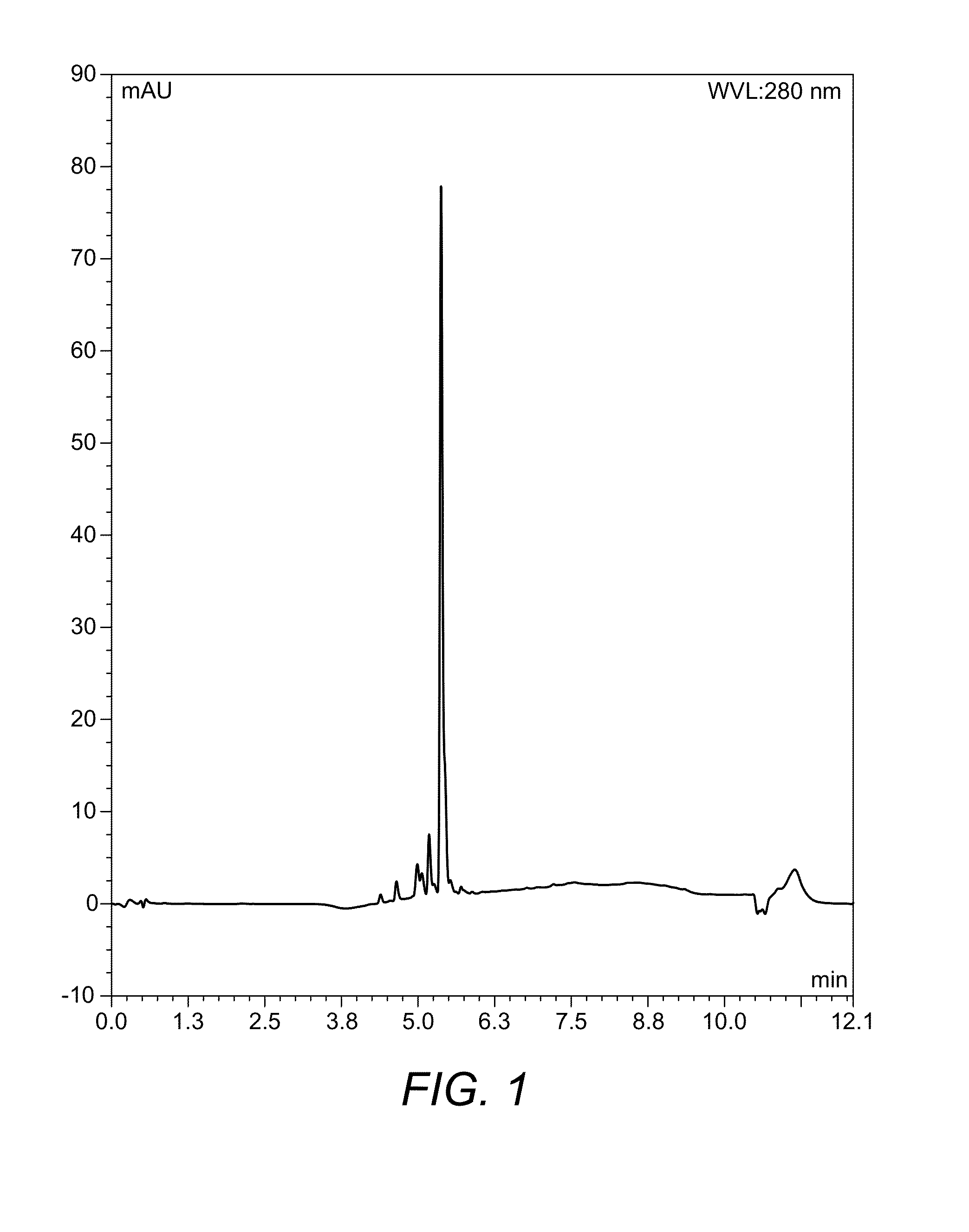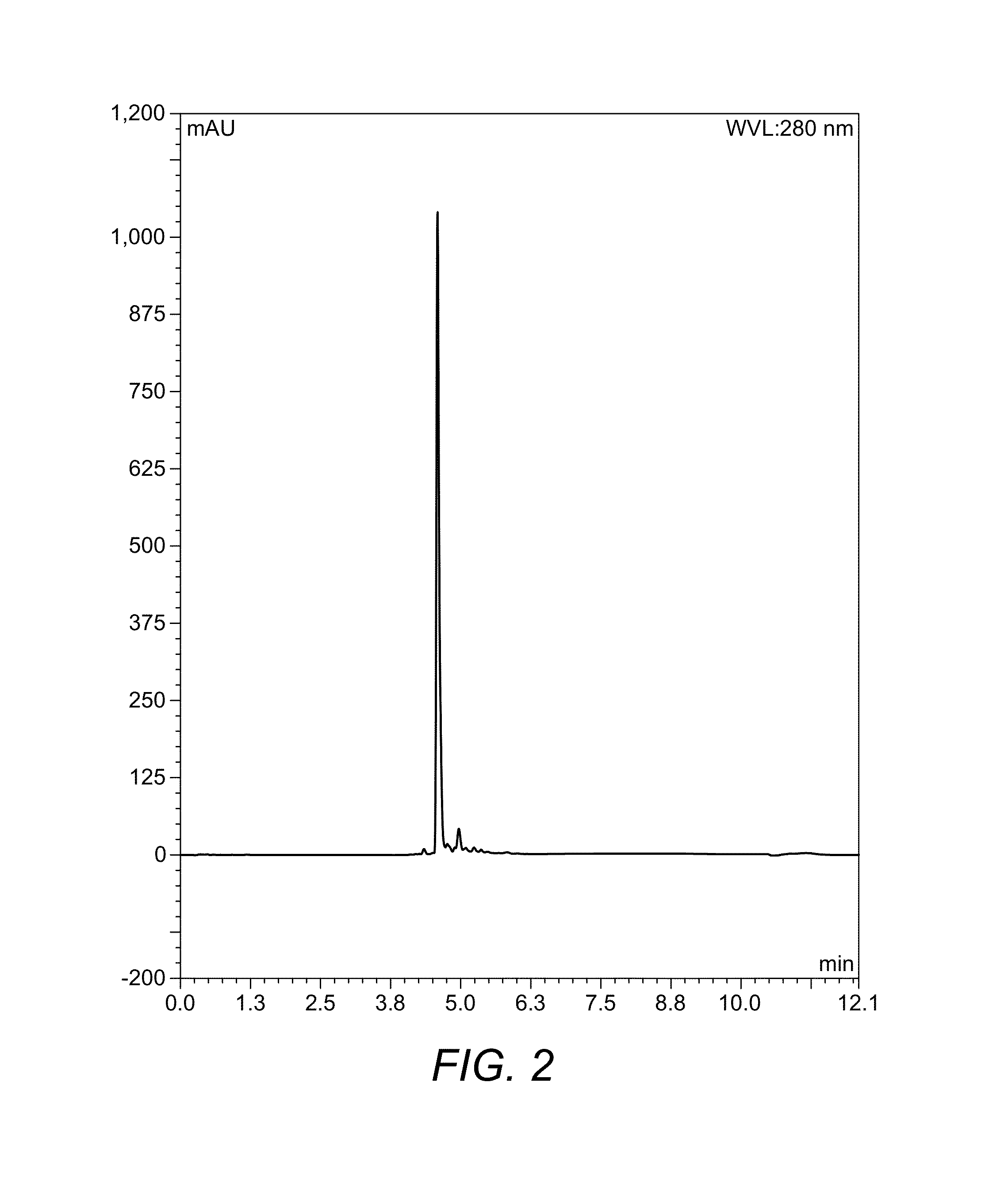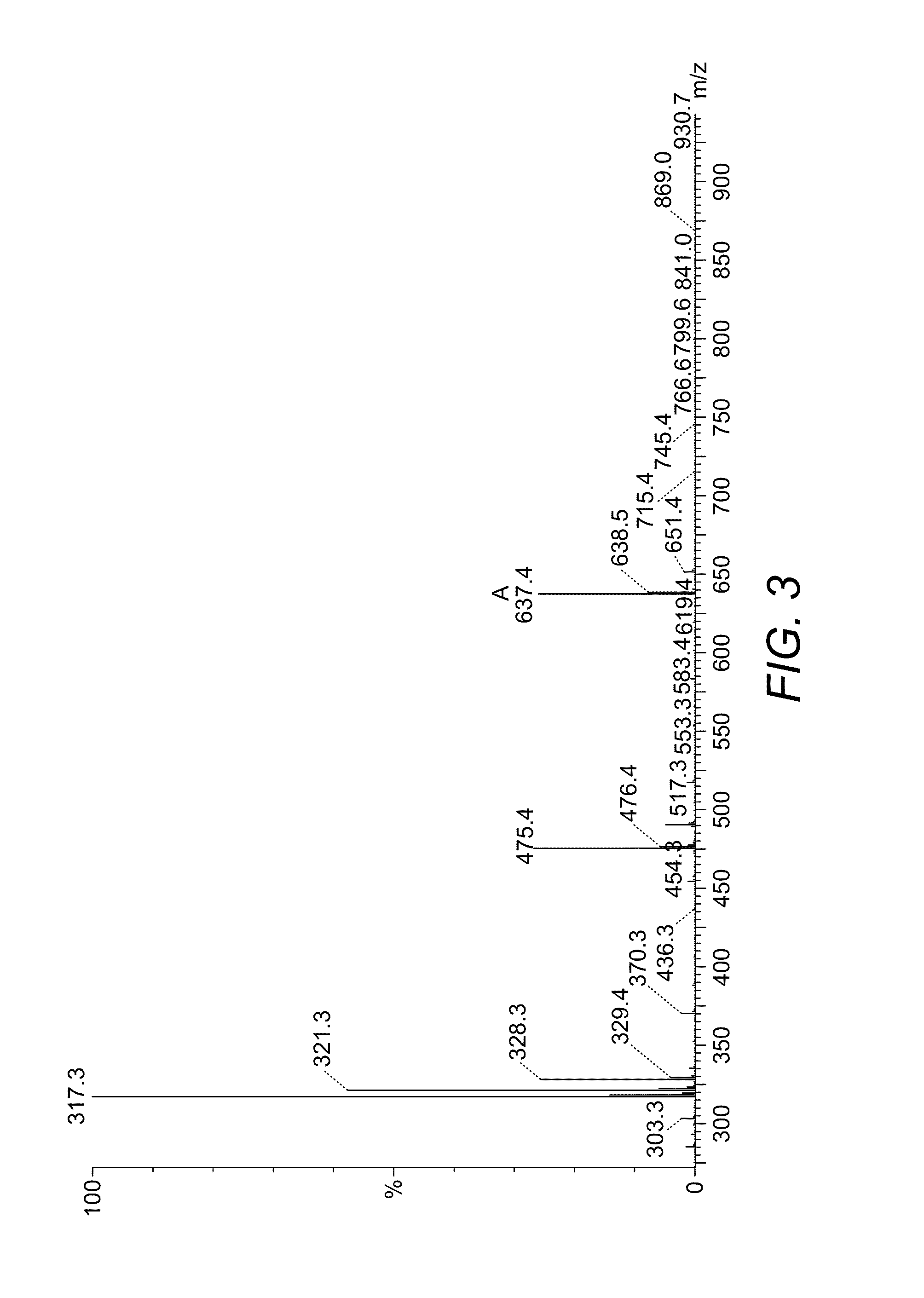Peptide clearing agents
a technology of peptides and peptides, applied in the field of peptide clearing agents, can solve the problems of limited therapeutic efficiency and specificity of adept systems, and achieve the effect of reducing the conversion rate of prodrug in normal tissues
- Summary
- Abstract
- Description
- Claims
- Application Information
AI Technical Summary
Benefits of technology
Problems solved by technology
Method used
Image
Examples
example 1
Generation of a Clearing Agent Comprising a Glycosylated Binder Peptide for the Enzyme CPG2
[0092]A library of tripeptides is synthesised in the form of the PEPSCAN technology (2 & 3). The peptides are synthesized by robotic means attached to the inside surfaces of plastic wells. The first peptide in the series is based on the structure folic acid, which is the natural substrate for CPG2. Folic acid is a molecule consisting of pteroic acid linked via an amide bond to glutamic acid. CPG2 hydrolyses the glutamate-pteroic acid amide bond. This first tripeptide has the following sequence—Tryptophan-phenylalanine-glutamate (WFE), but the glutamate is a D-amino acid rather than an L-amino acid because it is intended that the glutamate-phenyalanine peptide bond should not be subject to lysis by CPG2. This sequence is chosen as it has the closest resemblance to folic acid possible with a tripeptide, having a bicyclic nitrogen substituted ring structure at the amino end, a six-membered aromat...
example 2
Clearing Agent Enzyme Binder CP014
Chemical Description and Graphical Representation of the Compound Designated CP014
[0103]
Method of Synthesis and Purification
[0104]Peptide CP014 was synthesised by solid phase peptide synthesis (SPPS) using a CEM Liberty Microwave Synthesiser and by application of Fmoc chemistry (Scheme 1 where R=resin). The resin Fmoc-Glu(OtBu)-NovaSynTGA (MerckBioscience) was employed on a scale of 0.1 mmol. All subsequent Fmoc-building blocks were purchased from NeoMPS, Bachem and MerckBioscience. The FMoc-serine galactose (acetyl protected) was obtained from Dextra Labs.
SPPS Step 1
[0105]
SPPS Step 2
[0106]
SPPS Step 3
[0107]
Cleavage of Peptide from Resin and Purification
[0108]On completion of the synthesis the resin was washed with DCM (10 mL) and EtOH (10 mL) and dried in a desiccator for 24 h. After 24 h the completed peptide was removed from the desiccator and subjected to a 10 mL solution of 95% TFA, 2.5% d.H2O, and 2.5% TIPS for 3 h. After this time, the reactio...
example 3
Clearing Agent Enzyme Binder CP006
Chemical Description and Graphical Representation of the Compound Designated CP006
[0130]CP006 is the forerunner to CP014 and its synthesis and structure are described below.
[0131]
Synthesis of CP006
[0132]IIDQ resin (500 mg, 1.91 mmol / g) was rinsed and swollen in 10 ml acetonitrile for one hour and the solvent drained under vacuum. Then Boc-amino naphthoic acid (polypeptide, 100 mg, 0.35 mmol) and H-Glu(OtBu)-OtBu (Bachem, 108 mg, 0.37 mmol) were dissolved in 5 ml acetonitrile and added to the preswollen resin and stirred gently for 72 hours at RT. The reaction was drained into a clean flask and solvent removed in vacuo. To the residue 50 ml of 50% TFA / DCM was added and stirred vigorously for 2 hours. After removal of solvent the residue was rinsed in ice cold tertbutyl methyl ether twice and decanted to leave a yellow solid. Dried crude material was redissolved in 5% acetonitrile (0.1% TFA) and purified by HPLC using an increasing gradient of 5-100% ...
PUM
| Property | Measurement | Unit |
|---|---|---|
| dissociation constant | aaaaa | aaaaa |
| dissociation constant | aaaaa | aaaaa |
| dissociation constant | aaaaa | aaaaa |
Abstract
Description
Claims
Application Information
 Login to View More
Login to View More - R&D
- Intellectual Property
- Life Sciences
- Materials
- Tech Scout
- Unparalleled Data Quality
- Higher Quality Content
- 60% Fewer Hallucinations
Browse by: Latest US Patents, China's latest patents, Technical Efficacy Thesaurus, Application Domain, Technology Topic, Popular Technical Reports.
© 2025 PatSnap. All rights reserved.Legal|Privacy policy|Modern Slavery Act Transparency Statement|Sitemap|About US| Contact US: help@patsnap.com



